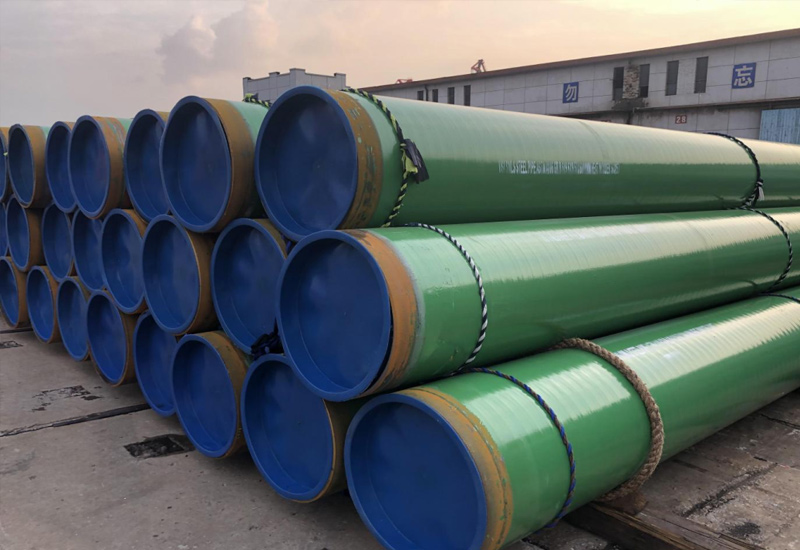HOT BLOG TAGS
DIN 30670
Technical Analysis of DIN 30670: Polyethylene (PE) External Coating for Steel Pipes
1. Definition & Scope
DIN 30670 is a German industrial standard for the p.e.-coating of steel pipes and fittings. This standard describes materials, application systems, material properties, application, inspection, and quality control for clay-lined buried steel pipe for transmission of oil, gas, hazardous liquids, or other products deterimental to the coated or lined pipe.
1.1 Applicable Products
Pipe Categories: Welded (spiral/straight seam) and seamless steel pipes.
Applications: Oil & gas transportation, water supply, chemicals pipelines, sub sea installations.
Environmental Suitabilty: Resistant to soil corrosion, moisture, mechanical damage and microbiological attack.
2. Dimensional Specifications & Tolerances
2.1 Pipe Dimensions
| Parameter | Specification |
| Pipe Diameter | DN 15 (½”) to DN 2000 (80″) |
| Standard Length | 6m or 12m (custom lengths available) |
2.2 Coating Thickness Requirements
| Pipe Diameter (mm) | Minimum PE Thickness (mm) |
| ≤100 | 1.0 |
| 100–250 | 1.5 |
| 250–500 | 2.0 |
| >500 | 2.5 |
2.3 Tolerances
Coating Thickness: ±10% (local minimum ≥80% of nominal thickness).
Surface Smoothness: No bubbles, cracks, or inclusions; irregularities ≤5% of coating thickness.
Pipe Ovality: Must comply with DIN EN 10220 to ensure proper adhesion.
3. Testing & Performance Requirements
3.1 Mandatory Tests
| Test | Standard Method | Acceptance Criteria |
| Adhesion Strength | DIN 30670 Annex A | ≥50 N/cm (at 20±5°C) |
| Cathodic Disbondment | DIN EN 10289 | ≤8 mm radius (48h, 1.5V, 50°C) |
| Impact Resistance | DIN EN 1411 | No cracks/delamination after 9J impact |
| Electrical Resistance | DIN EN 10289 | ≥1×10⁴ Ω·m (20°C) |
| Aging Resistance | DIN EN 12201-1 (UV test) | ≥80% tensile strength retention after 1000h |
3.2 Additional Tests (Conditional)
Rockfall Resistance (for Type B coatings).
Bending Test (for pipes requiring field bending).
4. Material Properties & Classification
4.1 Polyethylene (PE) Requirements
| Property | Requirement |
| Density | 0.935–0.955 g/cm³ |
| Melt Flow Rate (MFR) | ≤0.5 g/10min (190°C, 5kg) |
| Tensile Strength | ≥20 MPa |
| Elongation at Break | ≥600% |
| Vicat Softening Point | ≥110°C (DIN EN 727) |
4.2 Coating Classification
Type A (Standard): For moderate corrosion environments (e.g., typical soil).
Type B (Reinforced): For aggressive conditions (e.g., rocky terrain, high mechanical stress).
20% thicker than Type A.
Additional impact/abrasion resistance tests.
5. Complementary Technical Notes
3-Layer PE (3LPE) Option: Combines Fusion-Bonded Epoxy (FBE) + adhesive layer + PE for enhanced performance (refer to DIN 30678).
Field Joint Coating: Must use compatible materials (e.g., heat-shrink sleeves, liquid epoxy) matching the main coating’s properties.
6. Comparison with Other Standards
| Standard | Key Differences |
| ISO 21809-1 | Global applicability; less stringent on European soil conditions. |
| GB/T 23257 (China) | Based on DIN 30670 but includes high-salinity soil tests. |
Conclusion
DIN 30670 ensures long-term corrosion protection for steel pipes through strict material selection, process control, and performance validation. Engineers must select Type A or B based on environmental risks (e.g., soil resistivity, chloride content) and often combine it with Cathodic Protection (CP) for extended service life.
Related Products
Share:
HOT TAGS
latest posts
- Introduction:Technology differences determine success or failure, and selection needs to be “precise”
- FBE Steel Pipes: Corrosion Protection Redefined
- DIN 30671: A Guide to FBE Coating for Steel Pipes
- A Guide to Structural Pipe: ASTM A500vsEN10219
- Weld Seam Integrity: A Deep Dive into LSAW vs. SSAW Pipe








